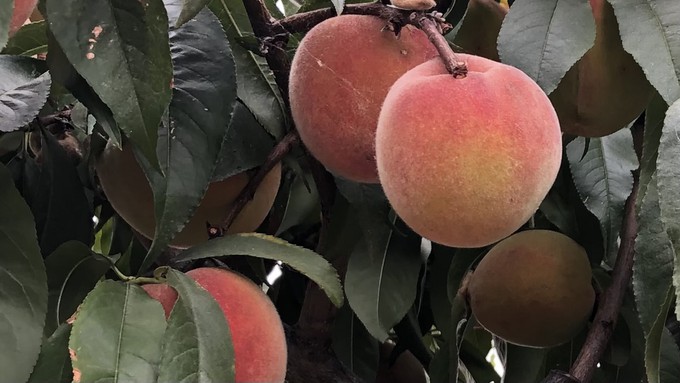
Roseville class covers fruit tree care from planting to harvest

Peaches can be a challenge to grow, but are so worth it. Learn about growing fruit trees in a free Roseville workshop next month. Kathy Morrison
Turn your landscape into your own little food forest with a free workshop from the City of Roseville.
“Growing Fruit Trees” focuses on the basics (plus a lot more) from choosing the right varieties for your home to pruning for higher yield and easier harvest.
Set for 10 a.m. Saturday, Jan. 27, the two-hour class will be held at Martha Riley Community Library’s meeting rooms. Seating is limited; sign up today. Register here.
“You may know when to pick and enjoy that delicious fruit, but do you know how to choose, plant, tend, and prune your fruit tree? Join Roseville Urban Forest Foundation arborist Lani Houck to learn how to grow and maintain fruit trees, from planting to harvest,” say the organizers. “Learn about choosing, planting, watering, and pest management to keep your fruit trees beautiful and productive. We will provide pruning instructions in this workshop, but consider taking the Pruning Fruit trees workshop to get in-depth pruning information.”
That follow-up pruning workshop, scheduled for 6 p.m. Thursday, Feb. 22, unfortunately is full at the moment, but a waiting list is available for signups.
Roseville also offers a general pruning class, "Pruning With Purpose." The Jan. 13 workshop is full, but there is plenty of space in the one scheduled Wednesday, Feb. 7, from 6 to 8 p.m.
Martha Riley Community Library is located at 1501 Pleasant Grove Blvd., Roseville, next to the Roseville Utility Exploration Center.
Roseville’s popular gardening classes tend to fill up quickly. Find more available workshops for 2024 at roseville.ca.us/exploremore.
Comments
0 comments have been posted.Sacramento Digs Gardening to your inbox.
Sites We Like
Garden Checklist for week of July 21
Your garden needs you!
* Keep your vegetable garden watered, mulched and weeded. Water before 8 a.m. to reduce the chance of fungal infection and to conserve moisture.
* Feed vegetable plants bone meal, rock phosphate or other fertilizers high in phosphate to stimulate more blooms and fruiting. (But wait until daily high temperatures drop out of the 100s.)
* Don’t let tomatoes wilt or dry out completely. Give tomatoes a deep watering two to three times a week.
* Harvest vegetables promptly to encourage plants to produce more. Squash especially tends to grow rapidly in hot weather. Keep an eye on zucchini.
* Pinch back chrysanthemums for bushy plants and more flowers in September.
* Remove spent flowers from roses, daylilies and other bloomers as they finish flowering.
* Pinch off blooms from basil so the plant will grow more leaves.
* Cut back lavender after flowering to promote a second bloom.
* It's not too late to add a splash of color. Plant petunias, snapdragons, zinnias and marigolds.
* From seed, plant corn, pumpkins, radishes, winter squash and sunflowers.